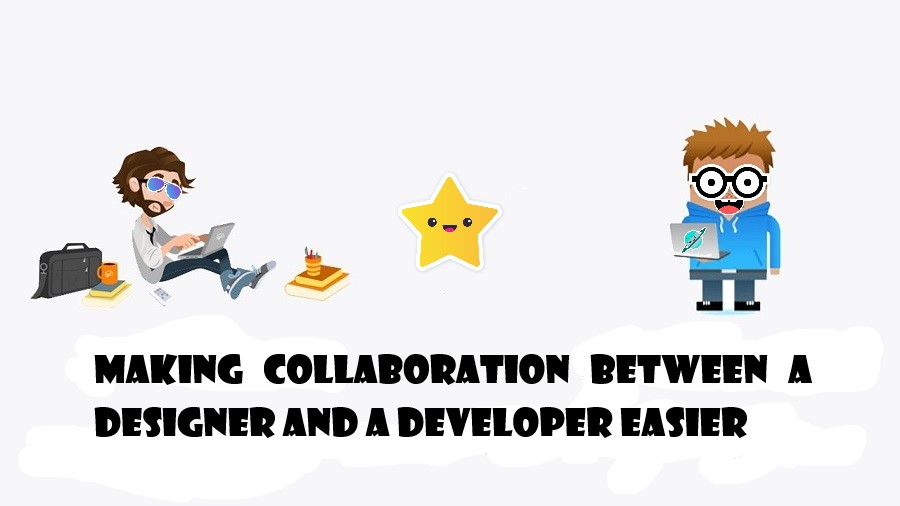Making Collaboration Between a Designer and a Developer Easier

The disconnect between designers and developers slows down workflows and makes bringing things to market more difficult. You’ll probably find that your organization has to rectify many mistakes before you can finalize a product and deliver it to consumers if your design and development product teams don’t work well together.
Some tips work well while you and your team are in the same room, while others are useful for remote workers or freelancers. What comes through loud and clear in all of the recommendations is the importance of mutual respect and that everyone is working on getting the most excellent possible project outcome.
Why were these developers asking so many questions? It would be a source of frustration for the project’s creator. Isn’t it possible for them to develop the website exactly as I intended? Why aren’t the fonts the size I want them to be?
If the web designers and developers want the best website design, they should learn to understand each other.
The following suggestions can help a designer and a developer get closer, improve the process, and provide better user experiences.
1. Create a design system that allows designers and developers to work with the same components.
The most important thing you can do to bridge the gap between teams is to create a design system that employs the same components for designers and engineers. During the designing and coding phases, your design system should supply everything your team needs, including the product’s approval:
- Typography
- Colours
- Icons
- Photographs
- GIFs
- Sounds
- Interactive elements
You can improve every step of production by having your designers and developers use the same design system, so they don’t have to waste time determining which font or colour to use or code this button or that form.
Companies have always struggled with this strategy because they construct products using an image-based method, which requires much effort to maintain. Developers must find ways to make components function after the design team has completed their job.
A code-based solution bridges the gap by providing designers and developers with a single source of truth that can be used at any moment.
2. Improve communication between front-end engineers and web designers.
Your design and development teams must communicate easily with one another. Not long ago, there were few options for improving team communication. You may have them share a workstation or create a social media group for everyone.
The more straightforward communication becomes, the more likely your team members will communicate with one another. Please give them the resources they need to connect and form professional connections.
3. Invite product designers and developers to brainstorming sessions.
Too often, team members are left out of crucial brainstorming meetings. The project manager can consider inviting the development team leader to discuss the obstacles of adding particular features to a product.
Increase the number of designers and developers participating in brainstorming sessions to foster camaraderie, discuss ideas, and uncover unique solutions that might otherwise go unnoticed without everyone’s input.
You can improve the outcome of your brainstorming sessions by:
- Choosing a varied group of people with a variety of skills.
- Establishing and explaining session guidelines before the arrival of participants.
- Set a timer so that no one has to keep track of the clock.
- When asking others to contribute their views, use a systematic approach (surprising someone will only make them nervous).
- Without passing judgment, jot down every thought that comes to mind.
- Set up a follow-up meeting later in the day or week so that your facilitator may provide feedback and your group can talk about their preferred ideas.
Involving more individuals in the early stages of product development has the added benefit of demonstrating to departments that everyone has something meaningful to contribute, regardless of their position within the firm.
4. Encourage UX designers and web developers to get more familiar with each other’s responsibilities.
Unless your UX designers and web developers collaborate frequently, they may be unaware of the responsibilities they play in product development.
Educating your team on the basic vocabulary and work that the other group does can help you overcome the communication gap in your design process.
That isn’t to say that everyone’s skill sets must be shared. They need to communicate and understand the nature of other people’s contributions.
5. Set realistic goals.
To avoid misunderstandings, your team should establish a clear scope of work from the start. The project manager assesses what the team can do in the period allotted. To avoid project delays, budget overruns, and employee burnout, a project management team should recognize feasible development within the allocated time.
6. Requests for scope creep and changes.
Working in an open environment encourages people to develop new ideas (which is a good thing), but most timeframes and budgets are finite! This means you’ll have to figure out how to deal with scope creep and change requests while maintaining a positive working relationship.
We would frequently receive requests for things that were straightforward to implement with a comment expressing regret for such a drastic shift and requests for extremely time-consuming tasks with the expectation that they would be completed quickly. Nobody knows how long anything will take unless they are a professional.
Why would they want to? It’s crucial to keep this in mind rather than becoming frustrated by the significant changes that are being demanded. Have a discussion about the modification, explaining why it is more complicated than it appears, and determining whether it is a necessary addition or change, or simply a great notion.
If the change isn’t critical, logging it as a phase two request may demonstrate that it was received and will not be forgotten. If the significant modification is still desired, we will explain the time frame and provide alternatives. If a project has a fixed budget and a tight timeline, this may entail sacrificing another feature. We could describe the expenses and end date consequences if there was flexibility.
7. Before you start asking questions, do some research.
To save messages, calls, and, of course, meetings, attempt to investigate the topic before asking the developers a question.
You can look through the product’s manual and ask Google for some ideas.
Apart from saving your professors’ time, I believe that locating knowledge on your own boosts your confidence.
Of course, you should follow up and confirm the topic with them, but it is preferable to do so after researching the questions you have. This way, you’ll have some ideas, and the developers won’t have to explain everything to you from scratch.
When you do it, your coworkers will notice that you take ownership of the job and that you don’t bother them with every five-minute query because you’re too lazy to look it up on your own.
Read also: Free Guest Post Sites List 2022




